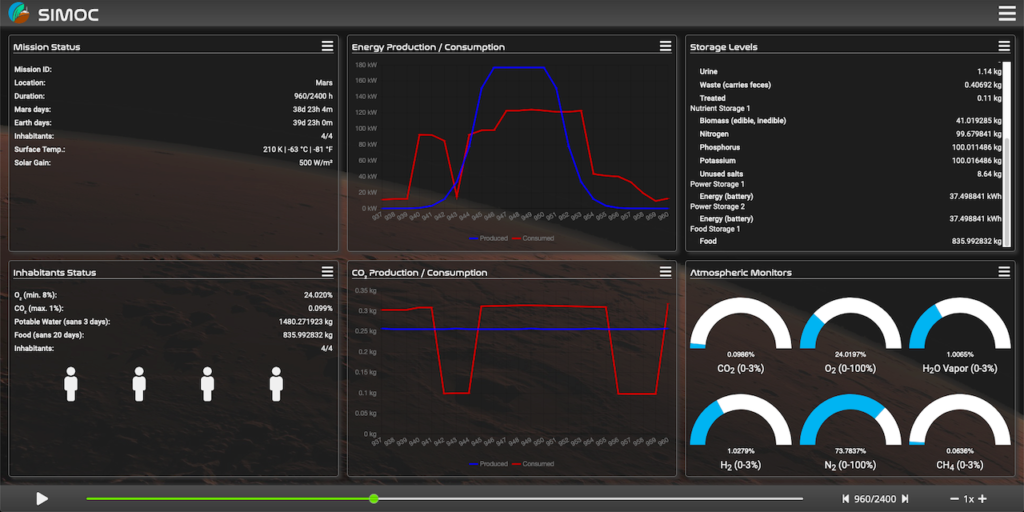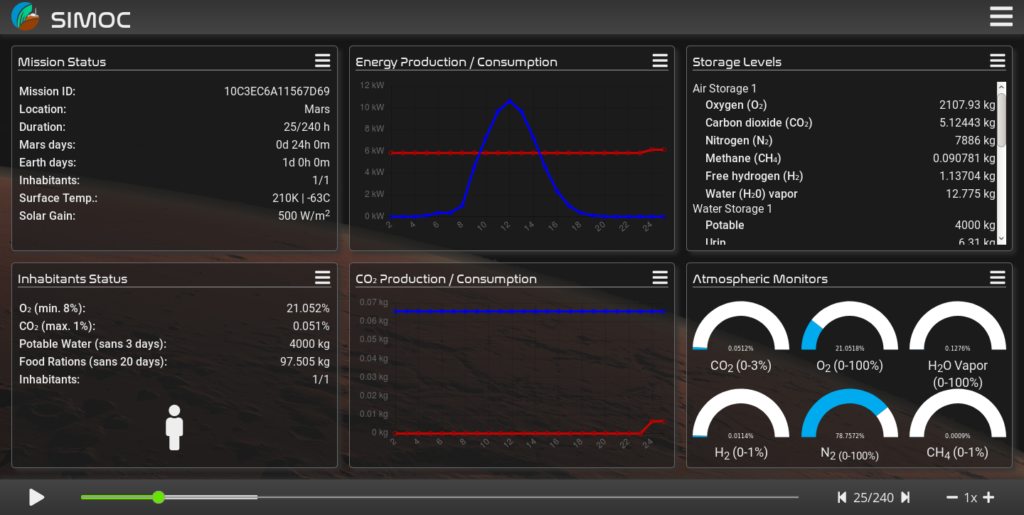At long last …
In the first half of 2020, the SIMOC development team has worked tirelessly to design, develop, rebuild, and test what has become a robust, engaging simulator for the complex interactions of isolated, off-world living.
We are eager to share with you the fruition of our labor in just twelve hours …




